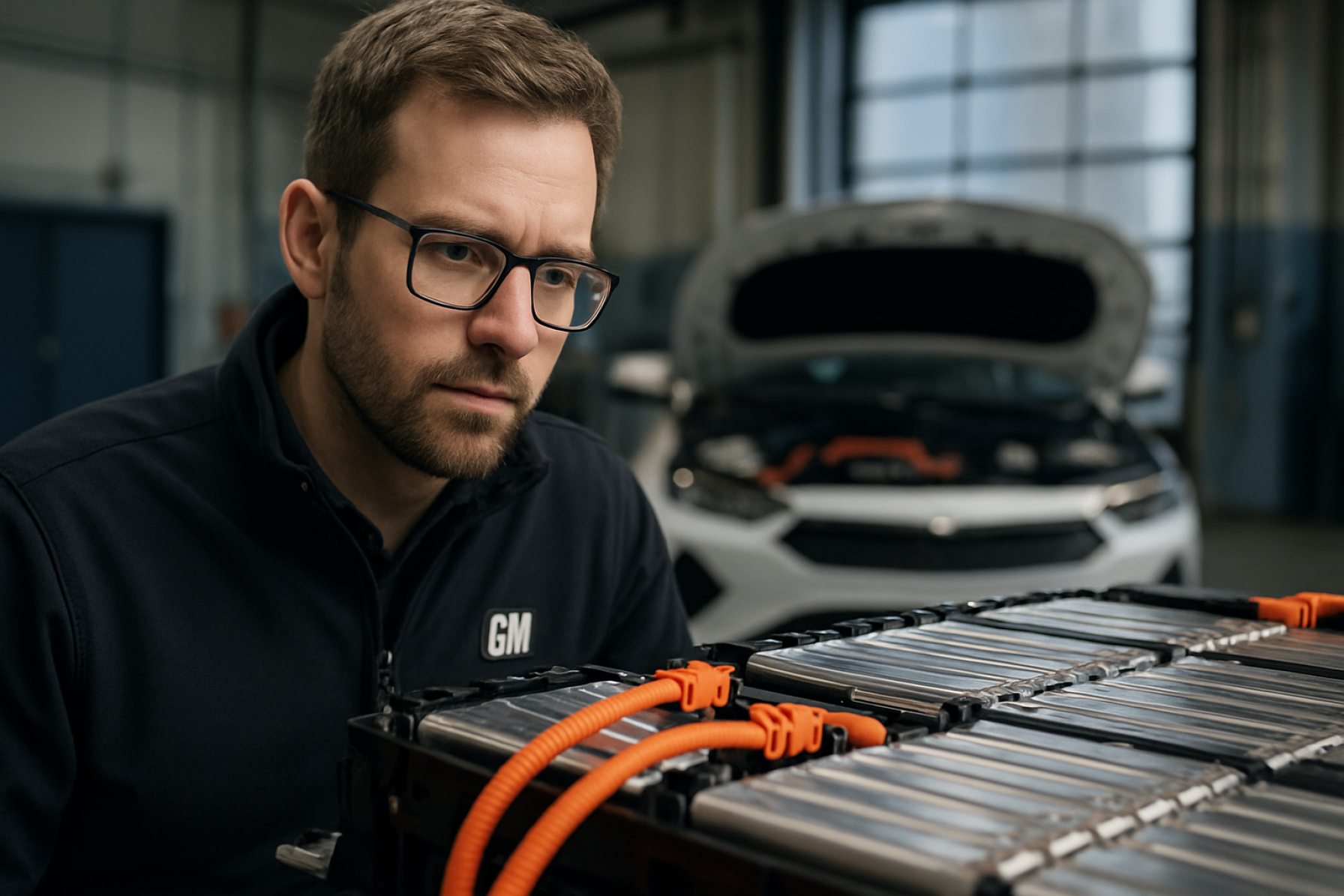Revolutionary LMR Battery Promises Longer Range and Cheaper EVs—GM’s Bold Leap into the Future
General Motors unveils groundbreaking lithium manganese-rich battery tech, aiming for affordable, longer-range EVs by 2030.
- 492 miles: Max range of GM’s Silverado EV Work Truck—longest for a truck globally
- Up to 50% fewer parts: Prismatic cells reduce battery complexity and costs
- Nearly 300,000: EVs sold in the U.S. in Q1 2025 (up 11.4% YOY, per Cox Automotive)
- $1,500/year: Average savings by switching to an EV for gas and maintenance
Picture a future where electric vehicles (EVs) travel farther for less. This is no longer a distant dream—General Motors is on the brink of delivering it. After a decade in stealth research, GM’s advanced battery team, in partnership with battery giant LG Energy Solution, is racing toward unveiling a game-changing lithium manganese-rich (LMR) power pack.
Thanks to years of breakthroughs—combining next-level dopants, coatings, and precise particle engineering—GM now believes its LMR batteries will unlock “impressive range” and drastically lower costs. At stake: affordable EVs that outperform anything on the road today.
Keep reading to see how this innovation could change what you drive, save you money, and even clean the air in your neighborhood.
What Makes GM’s New LMR Battery Special?
Traditional EV batteries use nickel-manganese-cobalt (NMC) or lithium-iron phosphate (LFP) chemistries. GM’s LMR battery packs, however, use a manganese-rich mix at the cathode—one of the key internal battery parts where powerful chemical reactions generate electricity.
Unlike rivals, GM’s battery experts have managed to fix age-old issues like early voltage fade and short pack life. By optimizing the mix with new chemicals and surface coatings, they’ve unlocked a combo that promises longer range, sturdier longevity, and a lower pricetag.
Best of all, the move to a rectangular “prismatic” cell design (instead of the more complicated pouch designs) cuts out up to half the non-active parts and slashes production costs. This brings EVs closer to mass affordability, pushing prices down from today’s average of over $55,000 for trucks—and as low as $33,600 for upcoming models like the Chevy Equinox EV.
Why is Range Such a Game-Changer?
Today’s average EV range is 250-350 miles. GM’s next-gen design—already proven in the Silverado EV Work Truck—hits a jaw-dropping 492 miles on a full charge according to government testing.
For drivers, more range means less worry about running out of power—especially on long trips or in rural areas. It’s a leap that could finally neutralize so-called “range anxiety,” accelerating EV adoption across the country.
How Does This Innovation Help the Environment and My Wallet?
Switching to an EV slashes thousands of pounds of heat-trapping air pollution every year—even if your electricity comes from fossil fuels, according to the U.S. Department of Energy. That pollution reduction has major health benefits, helping reduce cancer and respiratory illness risks linked to gas-powered tailpipe exhaust.
On the financial side, the numbers are equally eye-popping. Drivers save around $1,500 yearly thanks to lower fuel and maintenance costs. Connect your EV to a rooftop solar array (for more, visit EnergySage), and you could virtually eliminate charging costs—as well as your carbon footprint.
Plus, robust federal tax breaks are still available for both new EVs and solar systems. To maximize your savings, check the latest incentives from the IRS and wish list for the 2025 tax year.
Can GM’s New Battery Tech Outrun the Competition?
The race for better batteries is fierce. Rivals—including R&D labs at Toyota, Ford, and even startups—are experimenting with wild new materials, from potassium to recycled cow hair. But GM’s LMR platform, fortified with advanced chemistry and savvy engineering, aims to leapfrog both classic lithium-ion and trendy LFP designs.
And with GM joining a coalition to install 30,000 new fast-charging stations across the country over the next five years, the days of slow, hard-to-find chargers may soon be history.
How Do I Get Ready for the EV Revolution?
Follow these steps to make the swap to an electric vehicle effortless:
- Track major EV announcements from manufacturers like GM.
- Compare the latest models—check affordability, range, and incentives.
- Explore local and federal tax credits and rebates.
- Consider pairing your next EV with home solar for maximum savings.
- Scout the expanding network of fast-charging stations via apps or manufacturer websites.
Ready to join the EV future? Keep your eyes on the road—GM’s LMR battery breakthrough could put more affordable, long-range electric vehicles within your reach as early as 2030!
Quick Checklist to Jumpstart Your Electric Future:
- Research upcoming LMR-powered EV models
- Calculate fuel and maintenance savings versus your current vehicle
- Check available tax credits for EVs and solar at the IRS or EnergySage
- Stay updated on charging network expansions across your community
- Get ready to drive farther, save money, and help the planet—one electric mile at a time
